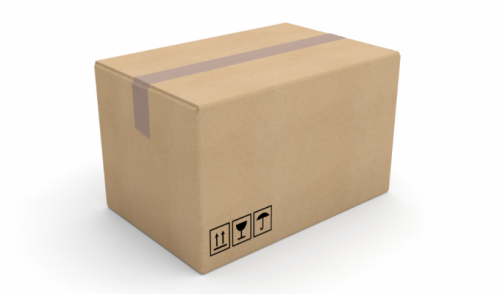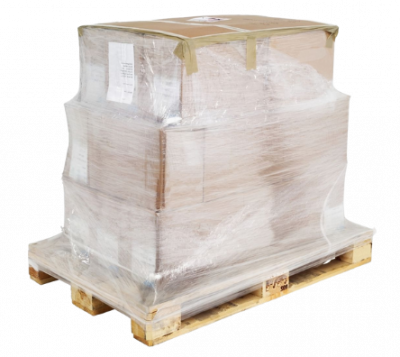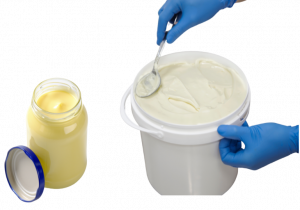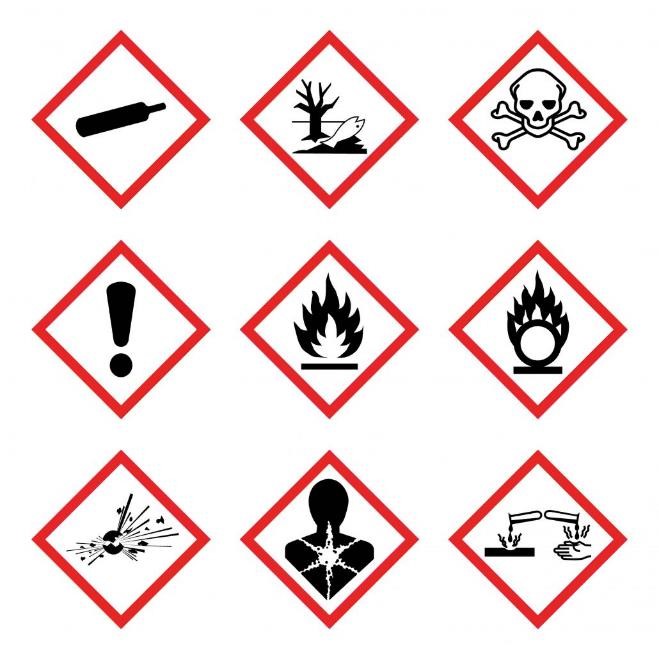Declaration guide
Before starting your declaration, it is useful to be aware of a few concepts. Some types of packaging do not have to be declared, while others must be reported to Fost Plus. In this section we explain everything you need to know in detail.

Packaging – non-packaging
First and foremost, you must distinguish packaging from non-packaging. This distinction is based on agreements between Fost Plus, Valipac and IRPC. If you have any doubts about this, consult the packaging/non-packaging list.
Some examples:
- Gas bottles are often transported in metal cages. These cages are not packaging.
- Glass is often transported on frames or racks. These are indeed packaging.
- A CD case is not packaging. The case belongs to the product and is therefore not packaging. However, the film in which it is wrapped, is packaging.
Internal packaging
Internal packaging is only used within the company itself (for example, to transport the product to the site itself, to store it or to protect it temporarily).
Example: a company manufactures bricks and stores a batch of these bricks which must be processed later. These bricks are stacked on pallets and wrapped in plastic film. This packaging is internal packaging. As it is only used within the company itself, it does not have to be declared.
N.B. it is never a question of internal packaging when the goods are transported on public roads (even if the company’s sites are only separated by a road). A company that transports goods from one site to another for processing must include the packaging used for transport in its declaration.
If in doubt as to whether packaging qualifies as internal packaging, consult our decision tree.
Single-use packaging and reusable packaging
Single-use and reusable packaging must be declared separately.
For single-use packaging, which is subject to the take-back and reporting obligation, a recycling rate of 80% must be demonstrated.
Reusable packaging is only subject to the reporting obligation. Valipac calculates the ratio of single-use packaging to reusable packaging. This allows authorities and industry to monitor market developments in reusable packaging compared to single-use packaging. Therefore, it is important to declare them. You do not pay any contribution for reusable packaging.
Packaging is reusable if the following conditions are met cumulatively:
- The company and its customers are willing to reuse packaging for the same purpose.
- The packaging meets certain quality and protection requirements so that it can be reused a minimum number of times for the same purpose.
- There is a system which encourages and guarantees the reuse of packaging (e.g. deposit system).
Examples of reusable packaging:
- Open-loop pallets (such as euro pallets, CHEP pallets or LPR pallets). This type of pallet is tracked electronically or kept in the pool using a deposit system.
- There is also closed-loop reusable packaging. This often involves reusable packaging used between established partners. For example, batteries manufactured at a location X and transported in plastic boxes to a location Y where they are packaged. The empty truck brings the empty boxes to location X. These plastic boxes are reusable and belong to a closed loop specific to the company.
Our decision tree will help you to determine if your packaging can be considered reusable or not.
Primary, secondary and tertiary packaging
The IRPC requires us to distinguish between primary, secondary and tertiary packaging. This is the reason why we also ask you to take this into account in your declaration.
Primary packaging is sales packaging, designed to contain one sales unit for the end user.
Example: soap packaged individually in a cardboard box

Secondary packaging is grouped packaging, designed to contain different sales units
Example: a large cardboard box which contains 50 individually wrapped bars of soap.

Tertiary packaging is transport packaging, designed to prevent damage related to the handling and transport of goods.
Example: the pallet and stretch film on which 20 cardboard boxes are stacked.

Household packaging vs commercial and industrial (C&I) packaging
In terms of primary packaging, it is essential to distinguish between household and C&I packaging as only C&I packaging is declared to Valipac. Your household packaging is reported to Fost Plus.
You can determine this distinction as follows:
Is the product intended for the exclusive use of professionals, industry, communities, schools, hospitals, etc.?
- YES > The product is industrial, and its primary packaging is a C&I packaging.
- NO > Consult the list for distinguishing household and industrial products (grey list). It will indicate the household or industrial nature of your product and its primary packaging.
Consult the grey list (in French) for the distinction between household and industrial products. It was established by Valipac and Fost Plus, in collaboration with the sectoral federations and approved by the IRPC.
Example: a 250g mayonnaise jar is a household packaging. On the other hand, the same mayonnaise packed in a 10 kg bucket is a C&I packaging. But what about the 1.5 kg mayonnaise jar? The grey list indicates that the threshold for ready-made sauces is 1.2 kg. In other words, all mayonnaise jars over 1.2 kg are C&I packaging.

Secondary packaging or grouped packaging is industrial, with the exception of multipacks. A multipack is the packaging around the product (often household) which constitutes a sales unit at the point of sale (e.g. the plastic film around 6 beverage cans).
Tertiary packaging is industrial, with the exception of household parcel packaging. Parcel packaging is transport packaging used only for sales to individuals in the context of purchases on the internet, by mail order or courier. In the context of internet sales, courier delivery, etc. to companies, there is never any question of parcel packaging.
Recyclable / non-recyclable packaging
In our report to the IRPC, recyclable and non-recyclable packaging must be declared separately. This is why we also ask you to make this distinction in your declaration.
The IRPC defines non-recyclable packaging as packaging whose waste is not used in a new product within the framework of the usual practices of collection, sorting and processing. The content of the packaging does not affect its recyclability.
In practice, the composition of a packaging will determine whether or not it is recyclable. This implies that the packaging of hazardous products is not necessarily non-recyclable. The recyclability of packaging is determined here from the point of view of mechanical recycling.
The materials below are considered non-recyclable:
Paper/cardboard
- Waxed, bituminised, siliconised paper/cardboard
Plastic
- Packaging composed of several layers of different polymers is considered non-recyclable. These plastics are better known as laminates.
Wood
- All industrial packaging made of wood is considered recyclable.
Metal
- All industrial packaging made of metal is considered recyclable.
Glass
- All industrial packaging made of glass is considered recyclable.
Other
- Ceramic packaging is considered non-recyclable.
Hazardous product packaging
Primary packaging of hazardous products must also be declared separately.
The rule is as follows: if the product contained in the packaging is toxic, dangerous, corrosive or similar, the packaging is also considered to be hazardous product packaging. In most cases, this is packaging subject to CLP regulations (packaging of mixtures or chemical substances classified as hazardous). Often this is indicated by hazard pictograms on the packaging.
